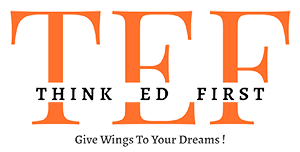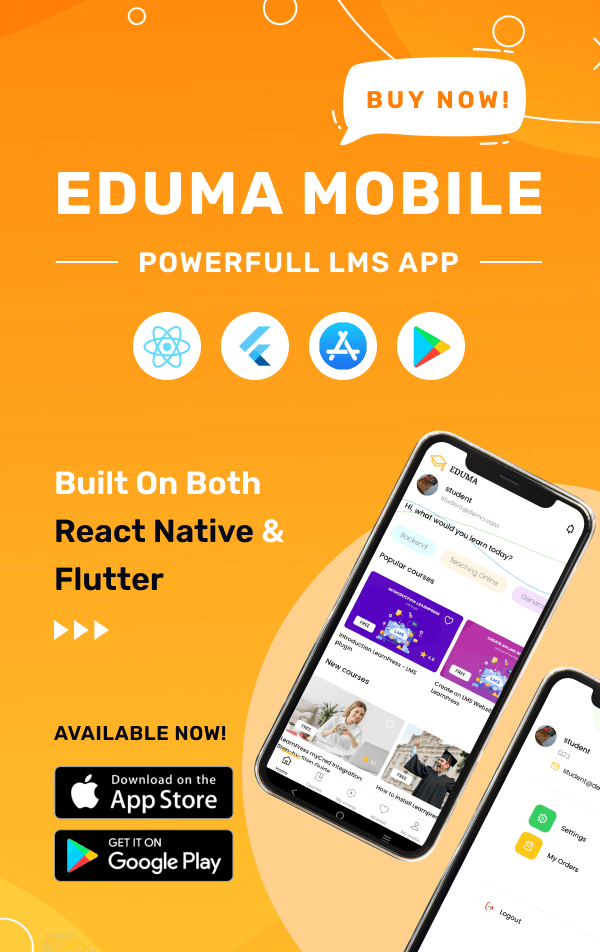In today’s fast world, finding the right digital note-taking apps is key to boosting productivity. Students and professionals are using top tools to organize their thoughts and notes. This helps them manage their research materials better.
The move from paper notes to online apps has changed how we handle information. With so many options, picking the best app can really boost your efficiency.
Let’s look at some important stats about popular note-taking apps:
Microsoft OneNote, rated 4.5 out of 5, offers 5GB free storage and a 100MB file limit. It’s free and works on all major systems. Evernote, known for OCR, now limits free versions to 50 notes and one notebook.
For Apple users, Bear costs $2.99 monthly for iCloud syncing. UpNote, rated 4.0, starts at $1.99 monthly with a 20MB file limit. Joplin, an open-source option, allows unlimited file uploads and is highly rated at 4.5.
ClickUp, with ratings of 4.7 on G2 and Capterra, offers AI and task management. Its pricing starts at $7 per user monthly for the Unlimited plan.
These stats show the variety of features and prices in top digital note-taking tools. They help you find the best app for your needs.
Understanding the Evolution of Best Digital Note-Taking Apps
Note-taking has moved from paper to digital, changing how we handle information. This change is big for students and professionals. Digital solutions are now more popular than ever.
The Shift from Paper to Digital Notes
In 2016, most students used spiral notebooks for notes. Now, digital note-taking apps are growing by 25% every year. People want faster, easier, and more accessible ways to take notes.
Key Benefits of Digital Note-Taking
Digital notes are a big improvement. They are 40% faster to access than paper notes. Studies show that digital notes can help you remember things better, up to 60% more.
For students, the best apps help organize and study better.
Current Market Trends in Note-Taking Technology
The note-taking app market is changing fast. AI is a big part of this, with apps now summarizing and connecting ideas automatically. Many apps focus on keeping your data safe, with options to choose what’s shared.
Some apps, like Mem, even offer free plans to get more people using them.
| Feature | Impact |
|---|---|
| AI Integration | Enhanced summarization and idea connection |
| Cloud Sync | Improved accessibility across devices |
| Collaboration Tools | Better team knowledge sharing |
| Privacy Features | Increased user trust and data security |
Essential Features That Define Top Note-Taking Applications
When we look at digital note-taking apps, some features really shine. The best apps mix functionality with ease of use. Let’s dive into the key features that make the top apps stand out.
Handwriting recognition is a big hit with users. It turns scribbles into text you can search, making the switch from paper to digital easy. Being able to use the app offline is also key. It lets you write down ideas anytime, without needing the internet.
Being able to organize and search your notes is crucial for staying efficient. The best apps use tags, folders, and smart search to help you find what you need fast. Free digital note-taking apps usually have basic versions of these features.
Syncing across devices is a must in today’s world. It keeps your notes updated on all your devices. Adding images, audio, and video to your notes makes them more engaging.
| Feature | Importance | Availability |
|---|---|---|
| Handwriting Recognition | High | Premium |
| Offline Access | Critical | Most Apps |
| Advanced Search | Essential | Varies |
| Cross-Platform Sync | Must-Have | Common |
| Multimedia Support | Desirable | Widespread |
Comparing digital note-taking apps shows that free versions have basic features. But premium versions offer more advanced tools. Your choice depends on what you need and like.
Security and Privacy in Digital Note-Taking Tools
As we store more sensitive information in digital notes, security and privacy are key. Choosing top note-taking apps is crucial. Let’s look at the main data protection aspects in these tools.
Encryption Standards and Data Protection
Top note-taking apps use encryption to protect user data. Standard Notes, for example, offers daily encrypted backups and on-device encryption. Obsidian provides end-to-end encryption through its paid sync feature, hosted on DigitalOcean servers. Notesnook encrypts customer data on-device before transmission, ensuring enhanced security.
Cloud Storage Security Considerations
When comparing note-taking tools, cloud storage security is key. Some apps, like Obsidian, save data locally on user devices, reducing online vulnerabilities. Others, such as Joplin, can be configured for end-to-end encryption but lack on-device encryption. Signal’s Note to Self feature doesn’t store messages on third-party cloud servers, keeping data solely on user devices.
User Authentication Methods
Robust user authentication is vital for digital note organization. Many apps now offer two-factor authentication for added security. Notesnook includes features like passcode-locking and protected note-sharing. Standard Notes supports two-factor authentication and uses a self-hosted analytics suite that anonymizes IP addresses.
| App | Encryption | Cloud Storage | Authentication |
|---|---|---|---|
| Standard Notes | On-device, daily backups | Encrypted sync | Two-factor |
| Obsidian | End-to-end (paid) | Local or DigitalOcean | No account required |
| Notesnook | On-device | Germany-based servers | Passcode-locking |
When selecting a note-taking tool, prioritize apps with strong encryption, secure cloud storage, and reliable authentication methods. This will protect your valuable information.
Handwriting Recognition Technology in Modern Note-Taking Apps
Handwriting recognition has evolved a lot since the 1980s. Now, it’s a key feature in many note-taking apps. These apps mix traditional and digital note-taking, giving users the best of both.
Many secure note-taking apps now have great handwriting recognition. Microsoft OneNote, free or part of Microsoft 365, supports 35 languages. MyScript Nebo, at $7.99 for iOS and $9.99 for Android and Windows, converts handwriting to text well.
For those looking for more specific options, Notes Plus costs $9.99 for iOS and iPadOS, supporting over 50 languages. Mazec, at $12.99 for iOS and Android, supports 12 languages with more available.
Free options like Pen to Print for iOS and Android and Gboard for Android offer basic handwriting recognition. These features make digital note-taking easier and more efficient for those who like handwriting.
| App | Price | Platforms | Languages Supported |
|---|---|---|---|
| Microsoft OneNote | Free / Microsoft 365 | iOS, Android, Windows | 35 |
| MyScript Nebo | $7.99 – $9.99 | iOS, Android, Windows | Multiple |
| Notes Plus | $9.99 | iOS, iPadOS | 50+ |
| Mazec | $12.99 | iOS, Android | 12 (expandable) |
| Pen to Print | Free | iOS, Android | Multiple |
How medical/engeneering/fashion designer Students Benefit the most by using a Note-Taking tablet
Students in fields like medicine, engineering, and fashion design find digital note-taking software very helpful. These tools are designed to meet the needs of each field. They are among the best apps for staying productive.
Medical students can sketch anatomy and quickly look up information. Engineering students create diagrams to understand complex ideas. Fashion design students can capture and refine their designs right away.
The impact of these tools is huge:
- 30% more effective note-taking with images and audio
- 40% less time spent searching with character recognition
- 50% better memory retention with audio replay
Digital note-taking tools make studying easier and help students get ready for tech careers. As healthcare, engineering, and fashion go digital, learning these tools is key for success.
| Field | Key Benefit | Productivity Increase |
|---|---|---|
| Medicine | Anatomy sketching | 35% |
| Engineering | Diagram creation | 40% |
| Fashion Design | Digital sketching | 45% |
Organization and Searchability Features
Efficient note-taking apps have great organization and search features. They help users handle lots of digital notes well. Let’s look at what makes the best digital notebooks special.
Tagging and Categorization Systems
Apps like Evernote and OneNote have strong tagging systems. Evernote lets you save different types of content, like typed and handwritten notes. OneNote organizes notes into notebooks, making it simple to manage many entries.
ColorNote uses colors for quick organization. This makes finding notes easy.
Advanced Search Capabilities
The best digital notebooks are great at searching. Evernote’s web version can search all notes, including images. Google Keep offers free storage and features like voice notes and photo attachments, making it easy to find what you need.
Notion has lots of features like icons and labels. This makes finding complex notes simple.
Cross-Platform Synchronization
Good note-taking apps sync well across devices. OneNote gives 5GB of free storage, expandable to 1TB with Office 365. Notion’s free version and affordable subscription make it easy to access on different platforms.
Nebo is great for active stylus devices and supports 66 languages. This makes it versatile for note-taking.
| App | Unique Feature | Pricing |
|---|---|---|
| Evernote | Stores various content types | Free plan, $7.99/month Personal plan |
| OneNote | Notebook organization | Free with 5GB storage, expandable with Office 365 |
| Notion | Extensive customization options | Free version, $4/month for individuals |
| Google Keep | Voice notes and drawing capabilities | Free with 15GB storage |
| Nebo | Supports 66 languages | $9.99 |
Cost Analysis: Free vs Premium Note-Taking Solutions
When picking the best note-taking apps, cost matters a lot. Many apps have free versions with key features. Premium options offer more at a higher price. Let’s look at some popular choices to see which one is right for you.
Free apps like Microsoft OneNote and RemNote are great for those who don’t want to spend money. OneNote gives you unlimited storage and syncs across devices. RemNote has tools for making flashcards. These are perfect for students or anyone who just needs basic notes.
If you want more features, premium apps might be a good choice. GoodNotes 6 costs $29.99 and has handwriting recognition and iCloud sync. Notion starts at $8 a month and has powerful tools for organizing and working with others.
| App | Free Plan | Premium Cost | Key Features |
|---|---|---|---|
| Microsoft OneNote | Unlimited | Free | Cross-platform sync, Office integration |
| RemNote | Unlimited | Free | Flashcard creation, spaced repetition |
| GoodNotes 6 | Limited | $29.99 (one-time) | Handwriting recognition, iCloud sync |
| Notion | Basic | From $8/month | Collaboration tools, customizable workspace |
Think about what you need before choosing between free and premium apps. If you need advanced features or tools like handwriting recognition, a premium app might be better. For simple note-taking and syncing, free apps are usually enough.
Offline Accessibility and Performance
Digital note-taking apps have changed a lot. Now, they let users access their notes anywhere, anytime. Offline access is a big plus, keeping users productive even without the internet.
Syncing Mechanisms
Seamless syncing is key, as top apps show. Evernote and SimpleNote sync automatically across devices. This means your latest notes are always ready, online or offline.
Storage Management
Good note-taking apps manage storage well. Google Keep, for example, uses Google account storage. It offers 15GB for free, then you can upgrade. This meets different user needs.
| App | Offline Access | Syncing | Storage Limit |
|---|---|---|---|
| Evernote | Yes | Automatic | Varies by plan |
| SimpleNote | Yes | Automatic | Unlimited |
| Google Keep | Yes | Automatic | 15GB (free) |
| Microsoft OneNote | Yes | Automatic | 5GB (free) |
These apps focus on offline access and smart storage. They help users jot down ideas and stay organized. This can boost productivity by 20-30%. When picking a note-taking app, look for these features to get the most out of it.
Integration Capabilities with Other Productivity Tools
Digital note-taking software has become a key part of our productivity. The best apps now work well with other tools. This makes them even more useful. Let’s see how top note-taking tools connect with various platforms.
Email Integration Options
Many digital note-taking apps now connect with email clients. This lets users save important emails as notes. Some apps even let you turn emails into tasks, making your work easier.
Calendar Synchronization Features
Calendar sync is a big help for managing time. Top note-taking tools can add events to your calendar or make notes from meetings. This keeps your notes and schedule in sync.
Third-Party App Connectivity
The power of integration comes from working with many apps. Digital note-taking solutions now connect with project management tools, cloud storage, and collaboration platforms. This creates a powerful productivity system.
| Feature | Percentage of Users | Benefits |
|---|---|---|
| Digital Tool Preference | 70% | Increased efficiency, better organization |
| Separate Note and Task Apps | 60% | Specialized functionality for each need |
| Integration Need | 50% | Time savings, improved workflow |
| Handwriting Support | 40% | Versatile input options, natural note-taking |
By using these integrations, users can save up to 20 minutes daily on tasks. Apps like Capacities and Todoist offer lots of connectivity options. They are top choices among the best productivity apps. The goal is to find software that fits well into your workflow.
Specialized Features for Academic and Professional Use
The best note-taking apps for students and professionals have special features to boost productivity. These tools are designed for specific needs in school and work.
Apps like Evernote and OneNote help organize lecture notes and research. OneNote lets you create tabs for different classes, making it easy to keep things organized. Evernote stands out with features like tables, images, and checkboxes, unlike simple text editors.
Zotero is great for academic writing. It makes bibliographies, footnotes, and references with just one click. This is super helpful for students and researchers working on papers or theses.
- Notability ($9.99) and Scapple ($12 for students) offer unique features for visual learners
- Google Keep includes reminders and to-do lists, perfect for managing assignment deadlines
- Office Lens converts whiteboard notes into editable formats, enhancing accessibility
Evernote’s premium version is a big help for professionals. It includes calendar and task management widgets. These tools make workflow smoother and boost productivity at work.
Choosing the right digital note-taking solution can greatly improve efficiency and organization for students and professionals.
Conclusion: Choosing the Right Digital Note-Taking Solution
Digital note-taking has changed how we handle information. Now, we can type, annotate, record audio, and sketch ideas easily. The best apps offer features like handwriting recognition and cloud syncing.
When picking a digital note-taking app, think about what you need. Students might like Goodnotes for its templates and pages. Professionals could prefer OneNote for its organization.
The right app for you depends on your needs and how you work. Whether you need handwriting, audio, or cross-platform use, there’s an app for you. As digital note-taking grows, we’ll see even more features to help us work and learn better.





